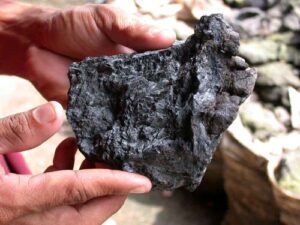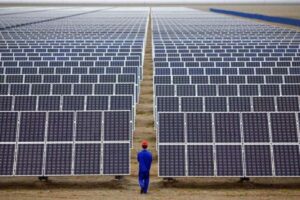
In January–July of this year, Ukraine reduced its exports of manganese ore by 93.4% compared to the same period last year, to 2,977 thousand tons.
According to statistics released by the State Customs Service (SCS) on Tuesday, exports fell by 92.5% in monetary terms, to $491 thousand.
The main exports were to Slovakia (94.30% of shipments in monetary terms) and Poland (5.70%).
During this period, there were no imports of manganese ore.
As reported, in January 2024, Ukraine exported 44,903 tons of manganese ore worth $6.563 million to the US, breaking a two-year hiatus in exports to foreign markets. In February-December 2024, there were no exports of manganese ore.
At the same time, in 2024, the country imported 84,293 tons worth $18.302 million from Ghana (98.85%), Brazil (0.99%), and Belgium (0.11%). In October-November, there were no imports.
Ukraine did not export manganese ore in 2022 and 2023, while in 2021 it exported 770 tons worth $89 thousand.
In addition, it was reported that the Pokrovsky Mining and Processing Plant (PGZK, formerly Ordzhonikidze Mining and Processing Plant), which is part of the Privat Group, and the Marganetsky Mining and Processing Plant (MGZK, both in Dnipropetrovsk region) stopped mining and processing raw manganese ore in late October-early November 2023, while NZF and ZZF stopped smelting ferroalloys. Later, ferroalloy plants resumed production to a small extent.
Manganese ore is mined and enriched in Ukraine by the Pokrovsky and Marganets Mining and Enrichment Plants.
The consumers of manganese ore are ferroalloy enterprises.

Growing domestic demand combined with huge oil reserves will lead to a significant increase in refining capacity in the Middle East, according to industry publication Offshore Technology, citing a study by GlobalData Energy.
“The Middle East is expected to be a key region in terms of growth in traditional refinery capacity worldwide, accounting for more than a quarter of the total increase by 2030. This growth is driven by large-scale projects, particularly in Iran and Iraq. Both countries are using their vast oil reserves to expand their oil refining infrastructure in an effort to meet growing domestic demand, reduce oil product imports, and strengthen their export capabilities,” the experts write.
In their opinion, Iran will dominate in terms of refinery commissioning, accounting for 40% of the total. The country plans to commission a total of 15 new and expanded projects. The largest of these is Jask II, with a declared capacity of 6,000 barrels per day. The project is currently in the preliminary design stage and is expected to be launched in 2028.
Oil refining capacity in Iraq is expected to increase by 1.9 million bpd. New projects are leading the way in terms of commissioning rates in the country, accounting for 65% of the total expected volume by 2030. About 28% of these are under construction. One of the significant projects, Basra II, involves increasing production by 300 bpd in 2027.
Oman ranks third in terms of oil refining capacity growth, with an increase of 695,000 bpd by 2030.

The Philippine armed forces will defend their territorial interests in the South China Sea, said Philippine President Ferdinand Marcos.
“The Coast Guard and Navy, which defend the Philippines’ territorial interests in the South China Sea, will never retreat and will stand their ground in disputed waters after the Chinese Coast Guard carried out dangerous blocking maneuvers and used a powerful water cannon in the Scarborough Shoal area on Monday,” the Associated Press quoted Marcos as saying on Monday.
The president also noted that if the situation around Taiwan escalates, his country will inevitably be drawn into the conflict. “We don’t want war, but I think if there is war over Taiwan, we will be drawn into it, whether we want it or not,” Marcos said.
On July 3-4, according to the Philippine side, Chinese coast guard ships pursued and carried out “dangerous blocking maneuvers” against Philippine coast guard vessels and fishing boats near the Scarborough Reef off the northern coast of the Philippines. Scarborough Reef is located in disputed waters in the South China Sea and is claimed by China, the Philippines, and Taiwan.
Earlier, the information and analysis center Experts Club published a comparative analysis of the military potential of China and Taiwan – https://expertsclub.eu/porivnyalnyj-analiz-vijskovogo-potenczialu-kytayu-i-tajvanyu-vid-experts-club/

Masdar (UAE) has begun construction of Azerbaijan’s largest solar power plant with a capacity of 445 MW.
“As part of the project implemented by Masdar, the installation of the first solar panel support for the Bilasuvar solar power plant and construction work in general began on August 12,” according to a statement on the official social media page of the Bilasuvar district administration (in the south of the country). An area of 1,454 hectares has been allocated for the construction of the plant.
“The Bilasuvar solar power plant will make an important contribution to increasing renewable energy production in the country, increasing the share of clean energy in the energy balance, and developing a green energy policy,” the statement said.
As reported, the groundbreaking ceremony for the 445 MW Bilasuvar and 315 MW Neftchala solar power plants took place during Baku Energy Week in June 2024. Both plants are scheduled to be commissioned in 2027.
Once completed, the two solar power plants are expected to generate around 1.7 billion kWh of electricity per year. Their launch will also reduce carbon dioxide emissions by approximately 830 million tons per year and lead to annual savings of 380 million cubic meters of natural gas. The total cost of the solar power plants is estimated at $670 million. These projects are being implemented by Masdar in cooperation with SOCAR Green (a subsidiary of the State Oil Company of Azerbaijan, SOCAR). SOCAR Green’s share in each of the projects is 25%. The Bilasuvar plant will generate 897 million kWh of electricity per year, supplying power to 179,000 consumers (homes) and saving 193 million cubic meters of gas annually.

Luxembourg-based OCSiAl, a global leader in the production of graphene nanotubes, continues to develop its first European production facility in Serbia. Based on official company data and information from the investment community, Serbian Economist presents the latest news about the company and its development.
This unique plant is located in Stara Pazova, northwest of Belgrade, on an area of approximately 10,000 m², equipped with nanotube synthesis lines, dispersion and concentrate production facilities, a research center, and quality control laboratories.
The facility’s current annual production capacity is 60 tons of nanotubes, with plans to double that to 120 tons by the end of this year. The plant already provides jobs for more than 200 employees, including engineers, operators, and application specialists. The €40 million project is the largest investment from Luxembourg in Serbia.
OCSiAl emphasizes the logistical advantages of the location, which allows it to supply nanotubes to Europe, Asia, and the US and strengthen the sustainability of the global supply chain.
OCSiAl plans to double production by launching a second synthesis line as early as 2026 and retains the option to rapidly scale up this modular complex.
Nanotubes manufactured under the TUBALL™ brand are used in batteries, coatings, and composites.